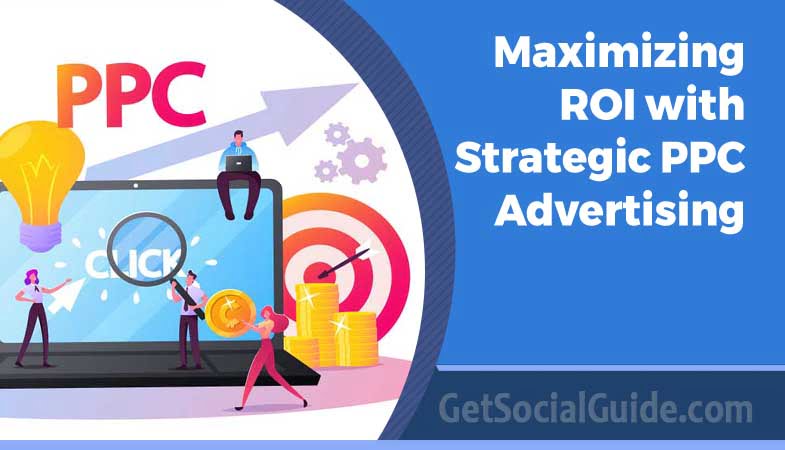Maximizing ROI with Strategic PPC Advertising
Pay-per-click (PPC) advertising has revolutionized the digital marketing landscape, offering businesses a potent tool to amplify their online presence. In bustling markets like Houston, choosing the right PPC agency can make all the difference in navigating this complex terrain. Leveraging the expertise of a seasoned PPC agency in Houston not only ensures that advertisers get the most bang for their buck but also taps into local insights, optimizing campaigns for the unique demographics of the region. Whether you’re a startup or an established brand, partnering with a specialized agency can help harness the full potential of PPC in today’s competitive digital arena.
![]()
Understanding the PPC Landscape
PPC advertising allows advertisers to pay a fee for each ad click, effectively enabling businesses to purchase site visits rather than relying solely on organic reach. Key platforms like Google Ads, Bing Ads, and Facebook Ads cater to different audience demographics and come with distinct features. Various pricing models, including CPC (Cost Per Click), CPM (Cost Per Mille), and CPA (Cost Per Acquisition), provide flexibility in ad spending. To maintain cost-effective online visibility, staying updated with the evolving PPC landscape is crucial.
Setting Clear Objectives
Establishing clear objectives is the cornerstone of any successful campaign, especially in the realm of PPC advertising. Here’s why and how:
- Purpose and Direction: Clear objectives offer a roadmap. Whether the goal is brand awareness, lead generation, or direct sales, knowing the end game ensures that all strategies and tactics align in the same direction.
- Budget Allocation: With well-defined objectives, businesses can distribute their budget effectively. If the primary aim is brand visibility, for instance, a CPM model might be suitable. If it’s conversions, a CPC or CPA approach would be apt.
- Measurable Outcomes: Clearly defined objectives are typically quantifiable. Whether it’s a 10% increase in sales or generating 500 new leads, having measurable objectives allows for real-time assessment and adjustments.
- Improved Decision Making: When faced with choices – like which keywords to bid on or what ad copy to use – clear objectives provide a benchmark against which options can be evaluated.
- Accountability: Teams and individuals can be held responsible when there are specific objectives in place. If an ad campaign falls short, stakeholders can review, analyze, and course-correct based on set goals.
- Optimization Over Time: With objectives as reference points, businesses can analyze performance over extended periods, recognizing patterns, and making data-driven decisions for future campaigns.
Target Audience Segmentation
One of the pillars of a successful PPC campaign is targeting. Leveraging tools that segment based on demographics, interests, and behaviors ensures your ads reach the right audience. Retargeting campaigns can pull back visitors who’ve interacted with your brand before but didn’t convert.
Keyword Research and Selection
Keywords are the lifeblood of PPC, especially for platforms like Google Ads. Utilizing tools like Google’s Keyword Planner can help advertisers discover and select effective keywords. Emphasizing long-tail keywords can provide better-targeted traffic, while negative keywords prevent irrelevant clicks, saving money. As search behaviors evolve, continuously updating and refining your keyword list ensures that you remain relevant and competitive. Conducting regular competitor keyword analysis can also unveil new opportunities and potential market gaps to target.
Crafting Compelling Ad Copy
The right keywords might get your ad in front of viewers, but compelling ad copy ensures they click. Impactful headlines, concise descriptions, and clear Call-to-Action (CTA) elements can make all the difference. It’s also advisable to split-test different ad variations to see which resonates best with audiences. Using emotional triggers or addressing a user’s pain points can elevate the persuasiveness of your ad. Furthermore, maintaining brand consistency across all ads builds trust and fosters recognition among potential customers.
Landing Page Optimization
A click is only the beginning, your landing page should be optimized to convert visitors. This means ensuring that the content matches the ad’s promise, loading times are fast, and the page is mobile-optimized. A/B testing can further refine the user experience and conversion rates. Including engaging visuals and clear value propositions can enhance user engagement and retention on the page. Ensuring intuitive navigation and minimizing distractions, like unnecessary pop-ups, can drive users seamlessly towards the desired action.
Budgeting and Bidding Strategies
Setting an optimal budget prevents overspending while ensuring your ads remain competitive. Whether you opt for manual or automatic bidding, understanding strategies like Maximize Conversions or Target CPA can be pivotal in reaching desired outcomes. Periodic reviews of your budget allocation can highlight areas of inefficiency and opportunities for reallocation to more successful campaigns. Seasonality, industry trends, and competitor activities should be considered when adjusting bids and budgets, ensuring you remain agile and responsive in the ever-changing digital landscape.
Ad Extensions and Enhanced Features
Platforms like Google Ads offer ad extensions such as sitelinks, callouts, and structured snippets. These not only provide additional information but also increase the visibility of ads, often leading to improved click-through rates. Ad extensions can enhance user experience by guiding potential customers directly to what they’re seeking, shortening their journey to conversion. By effectively utilizing these enhanced features, advertisers can differentiate their ads from competitors, offering a richer and more interactive ad experience to users.
Monitoring and Analysis
Continuous monitoring ensures you’re getting the best bang for your buck. Tools like Google Analytics provide insights into how users interact with your website post-click. Regularly reviewing Key Performance Indicators (KPIs) helps in refining campaign strategies. Beyond standard metrics, delving into user behavior flow can reveal potential bottlenecks or drop-off points in the conversion funnel. Integrating feedback loops, such as customer surveys, can offer qualitative insights, complementing the quantitative data and providing a holistic view of campaign effectiveness.
Conclusion
A strategic approach to PPC advertising is more than just getting clicks—it’s about maximizing the return on every cent spent. With consistent learning and adaptation, businesses can not only keep up with but thrive in the competitive digital ad space. Embracing innovation and staying updated with industry trends ensures that your PPC strategies remain fresh and effective. Ultimately, a well-executed PPC campaign, rooted in research and continuous optimization, can significantly elevate a brand’s online presence and drive measurable growth.



